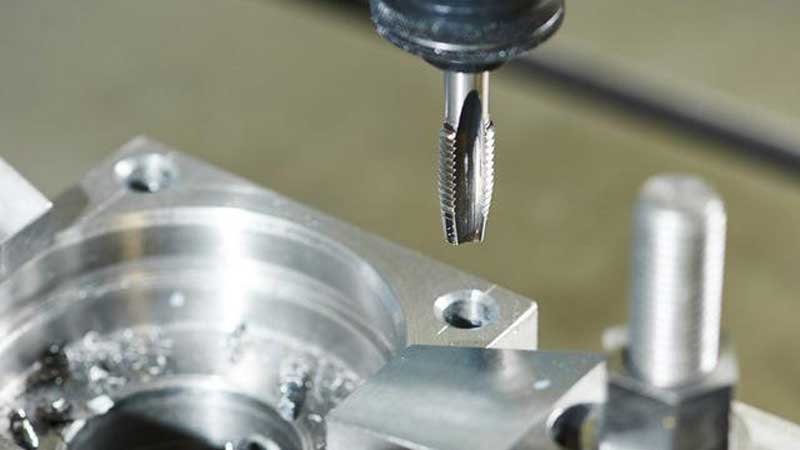How do you do blind hole tapping?
Unlike through holes, blind holes do not pass through the workpiece. They have a bottom, which is why blind holes are often referred to as guide holes. The bottom of the hole is also a potential issue for blind hole threads, which does not occur with through holes. If not handled properly, chips can accumulate in the blind hole. Additionally, the tap may collide with the bottom of the blind hole and break, or other problems may arise. Those who frequently use taps with blind holes often encounter these issues. The primary solution to this problem is to avoid misalignment and prevent the blind hole thread from becoming larger than intended.
Common Causes of Oversized Blind Hole Threads
During the process of machining blind hole threads, if chip removal during tapping is inadequate, chips left inside the blind hole can create reverse pressure. Although this may not lead to tap breakage, it can cause the tap to misalign, resulting in oversized blind hole threads.
Tool selection is important; taps have different flutes, such as spiral and straight. When using a spiral-flute tap, a spiral effect is produced. Due to the helical angle, an axial force is generated in the feeding direction, known as the spiral effect. This effect can pull the tap into the hole. If the cutting pressure is too high, the tool's movement speed may exceed the pitch, leading to axial misalignment.
How to Resolve the Spiral Effect
Properly clamp the tap to ensure high concentricity.
Choose materials for the blind hole tap chuck that provide high clamping force and concentricity.
Tool Selection for Blind Hole Threads
Blind holes are not through holes, so the bottom of the hole is flat. When selecting a tap, there are pointed and flat types. Examine the drawings of the blind hole; if the bottom is flat, choose a flat-end tap; if not, choose a pointed tap.
Blind hole thread processing can also be done using thread milling cutters, which come in types such as single-tooth, three-tooth, and full-tooth.



